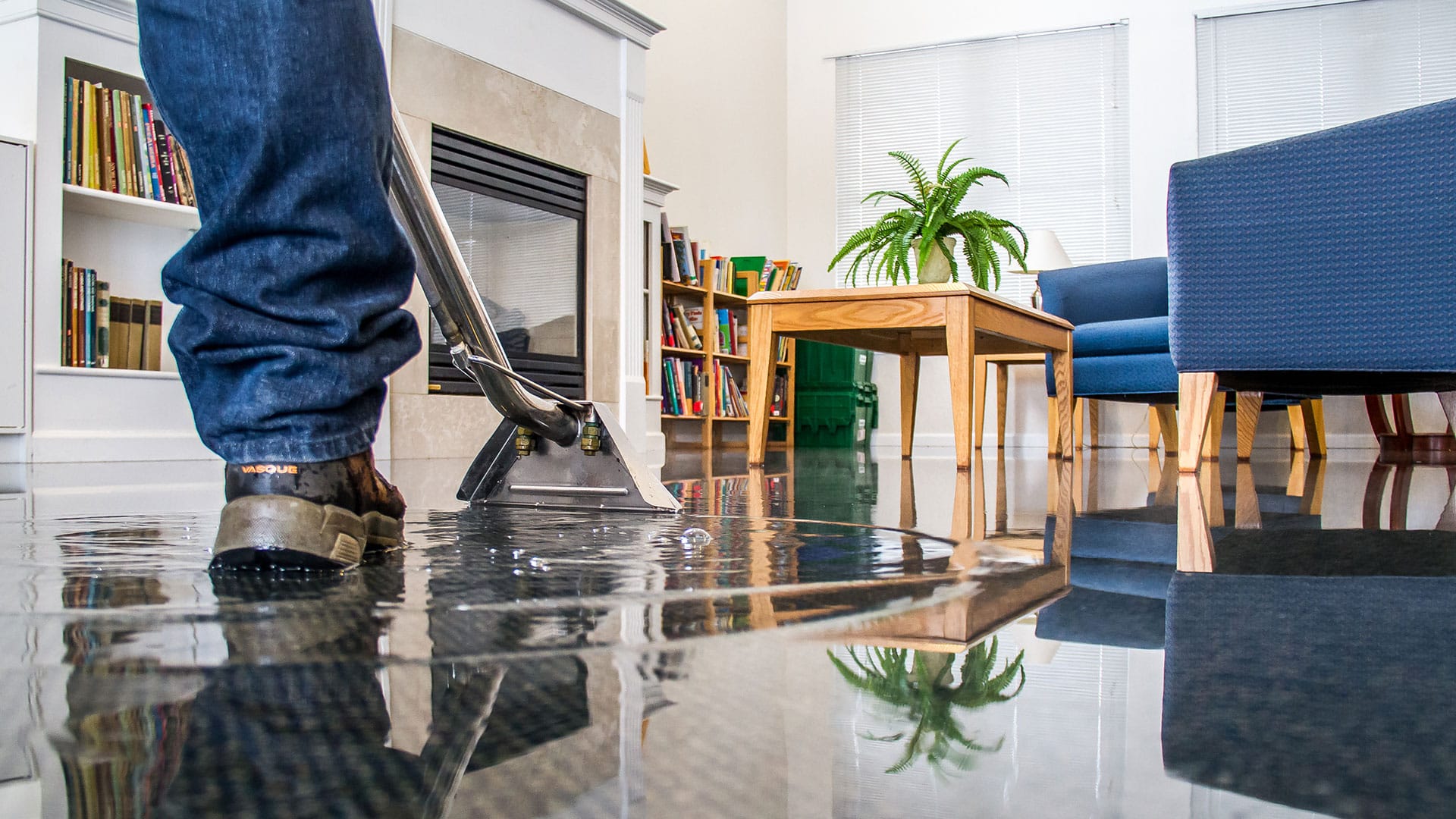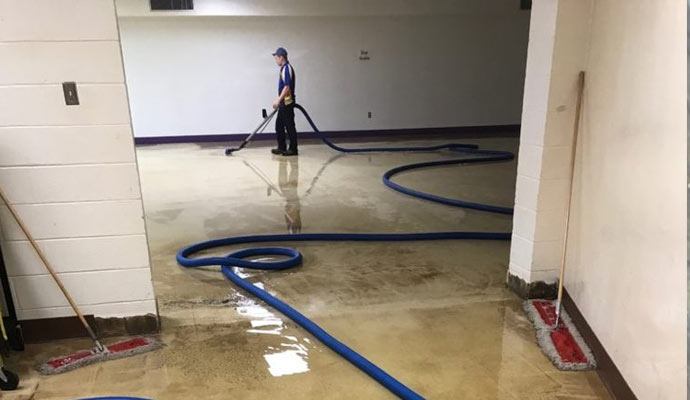A first-timer’s guide to understanding Water Damage Restoration
Leading Tips for Effective Water Damage Restoration: Protect Your Residential Or Commercial Property Today
Water damage can strike unexpectedly, causing substantial disturbance and possible hazards. Effective restoration needs an organized method to decrease further harm. From reviewing the damage to executing preventive actions, each action plays an important duty in securing property. Recognizing these methods can make all the difference in the results of a water-related dilemma. What essential activities should be prioritized to guarantee complete defense?
Assess the Damage Promptly

Turn off the Water
Shutting off the water supply is a vital action in protecting against more damage throughout a water-related incident. When a leak or flood takes place, immediate activity is essential to lessen the level of the damage. Situating the major water shut-off shutoff must be a concern. This shutoff is usually located near the water meter or where the water line enters the residential or commercial property. Once situated, turning the shutoff clockwise will quit the circulation of water. In situations where the primary valve is inaccessible, specific shut-off shutoffs for devices may additionally be utilized. Without delay shutting off the water not only shields the building from added damage but additionally assists in the succeeding restoration process, ensuring that recovery efforts can start without delay.
Get Rid Of Excess Water Promptly
Removing excess water without delay is crucial for minimizing damage and stopping mold growth in affected locations. The longer water remains in call with products such as insulation, timber, and drywall, the greater the threat of structural damage and the growth of mold and mildew. Property owners must act quickly to examine the situation and make use of suitable devices, such as wet vacuum cleaners or pumps, to extract standing water effectively. If the volume of water is significant, calling professional restoration services might be necessary, as they can supply customized tools and expertise. Furthermore, getting rid of furniture and items from the affected area can assist to decrease damage and facilitate the general restoration procedure. Prompt action not only protects home yet additionally help in a smoother recuperation trip.
Dry Out the Affected Area
After eliminating excess water, it is vital to dry out the damaged area extensively. This includes getting rid of any type of standing water and improving air circulation to promote dissipation. Efficient drying will certainly help protect against mold and mildew growth and more damage.
Get Rid Of Standing Water
Promptly resolving standing water is critical for reliable water damage restoration. The existence of stagnant water can bring about further residential or commercial property damage and develop an atmosphere for mold development. To mitigate these threats, it is vital to eliminate standing water as quickly as feasible (Water Damage Restoration). This procedure typically entails utilizing submersible pumps, damp vacuums, or specialized removal devices. Professionals advise assessing the deepness and level of the water before determining on the proper method for elimination. Security preventative measures should also be taken, consisting of using safety gear and making sure electrical power is shut off in affected locations. As soon as the standing water is successfully removed, the drying procedure can begin, additionally guarding the property from continuous damage
Rise Air Circulation

Evaluate for Mold Growth
Mold growth is a severe problem complying with water damage, as it can cause wellness concerns and architectural damage. After any kind of flooding or leakages, it is necessary to conduct a detailed examination of the influenced locations. This consists of checking covert spaces such as behind walls, under carpets, and in cellars or attics where moisture may stick around. Signs of mold include a musty smell, staining on surface areas, or visible development. Homeowner ought to use safety equipment when examining, as mold spores can position health dangers. Flood Cleanup Services. If mold is detected, it is important to resolve it immediately, as delaying removal can worsen the problem and boost the risk of severe health worries for occupants. Early treatment is essential to reliable mold administration
Repair and Bring Back Broken Structures
When attending to water damage, it is vital to very first analyze the structural integrity of the impacted areas (Flood Cleanup Services). This assessment aids determine potential hazards and informs the essential fixing strategies. Involving professional restoration solutions guarantees that the restoration procedure is performed securely and effectively
Examine Structural Integrity First
Prior to starting any kind of water damage restoration, it is necessary to assess the structural stability of the damaged area. This assessment aids recognize any jeopardized aspects, such as light beams, wall surfaces, or structures, which may present safety and security risks. Examining for indications of bending, splitting, or mold and mildew development is critical, as these indicators can reveal underlying damage that calls for prompt focus. In addition, recognizing the level of the damage can lead restoration initiatives and establish whether repairs are possible or if replacement is essential. It is necessary to record searchings for completely, as this info can be important for insurance coverage cases or future referral. Focusing on architectural evaluation warranties that restoration initiatives proceed safely and effectively, ultimately safeguarding the building and its owners.

Usage Expert Restoration Services
Utilizing expert restoration solutions is essential for successfully repairing and bring back broken frameworks after water events. These specialists possess the needed training, devices, and experience to reduce and analyze water damage thoroughly. They can recognize hidden problems, such as mold and mildew development and architectural weaknesses, that may not be promptly obvious. Expert services likewise use sophisticated drying out techniques and devices, making certain that all moisture is gotten rid of to avoid additional damage. In addition, they stick to industry standards Water Damage Restoration and guidelines, making certain that the restoration process is effective and safe. By engaging restoration experts, home proprietors can quicken healing, lessen long-lasting damage, and inevitably protect their investment - Water Damage Restoration. This positive technique is essential in keeping the honesty and safety and security of damaged frameworks
Prevent Future Water Damage
To effectively avoid future water damage, home owners have to take on an aggressive strategy to repair and maintenance. Routine examination of rain gutters, downspouts, and roofings is crucial; clogged up seamless gutters can bring about water overflow and roofing system leaks. Additionally, looking for leakages in plumbing fixtures and devices can prevent prospective damage. Property owners must likewise consider mounting sump pumps in basements or low-lying areas to take care of water build-up. Securing fractures in structures and making sure appropriate water drainage around the property are essential steps in safeguarding versus water breach. Keeping humidity degrees with dehumidifiers can stop mold development. By carrying out these safety nets, homeowners can substantially decrease the danger of water damage and protect their residential property for the long term.
When a water damage event occurs, it is crucial to evaluate the damage quickly to mitigate additional concerns. Removing excess water quickly is crucial for reducing damage and preventing mold growth in impacted areas. Quickly attending to standing water is vital for reliable water damage restoration. The presence of stagnant water can lead to further building damage and produce an environment helpful to mold growth. Before starting any type of water damage restoration, it is crucial to assess the structural integrity of the affected area.